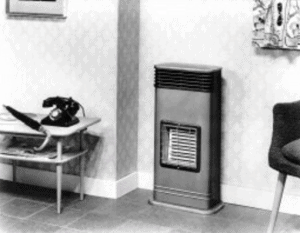Gas fires have excelled in terms of aesthetic design, quality, safety and efficiency as the years have progressed. In the early days coal was the preferred source of heating a home well into the 20th century, although gas fires did exist prior to this date. Early gas fires, sometime in the mid 19th century were partly made from asbestos and were heated by gas burners, and had no substantial safety elements factored in.
The gas fire – or gas heater as it was called, used the same principles as the Bunsen burner, which was invented around the same time. It was in the mid 1850’s when the gas fire was commercially marketed and sold.
In 1905 ceramic radiants were introduced. It wasn’t until the 1950’s with the introduction of convector fires, that gas fire efficiency dramatically improved. This was down to the use of heat exchangers to recover heat from the flue gasses.
 Gas fires really took off following the Clean Air Act of 1956. This act restricted the use of solid fuel in urban areas following a number of deadly smogs, which has partly caused by excessive use of coal. Gas fires in comparison where a great deal cleaner.
Gas fires really took off following the Clean Air Act of 1956. This act restricted the use of solid fuel in urban areas following a number of deadly smogs, which has partly caused by excessive use of coal. Gas fires in comparison where a great deal cleaner.
What’s New Nowadays?
As gas fires have progressed they have become safer and more efficient. The safety element has improved greatly, especially with factors like the inclusion of an oxypilot on gas fires. The oxypilot is a sensing device that will cause the gas fire to switch off if the level of oxygen in a room falls below a specific level.
The inclusion of glass-fronts on gas fires has further improved safety by stopping hands and various objects coming into contact with a live flame. We have come a long way since the first gas fire was invented!
Charlton and Jenrick manufacture a wide range of gas fires, hand made in the UK, designed for all tastes and budgets. You can learn more about our range by browsing our website, and specifically by viewing our gallery, containing our range.








